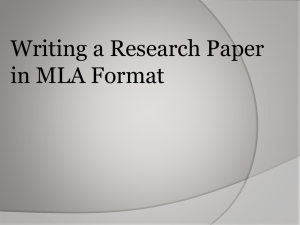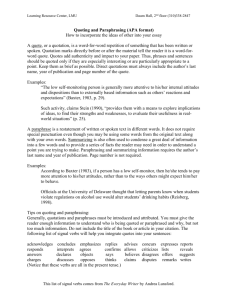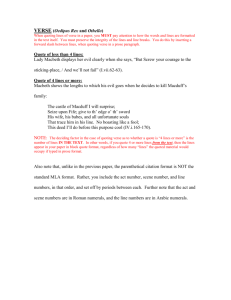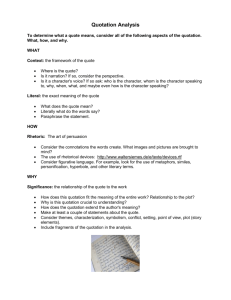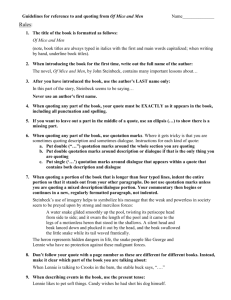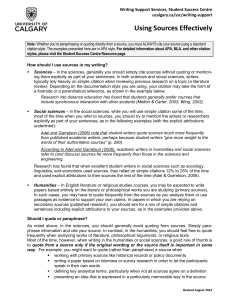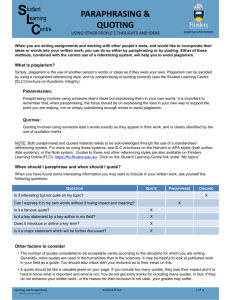How to properly acknowledge sources in an essay (MLA style):
advertisement
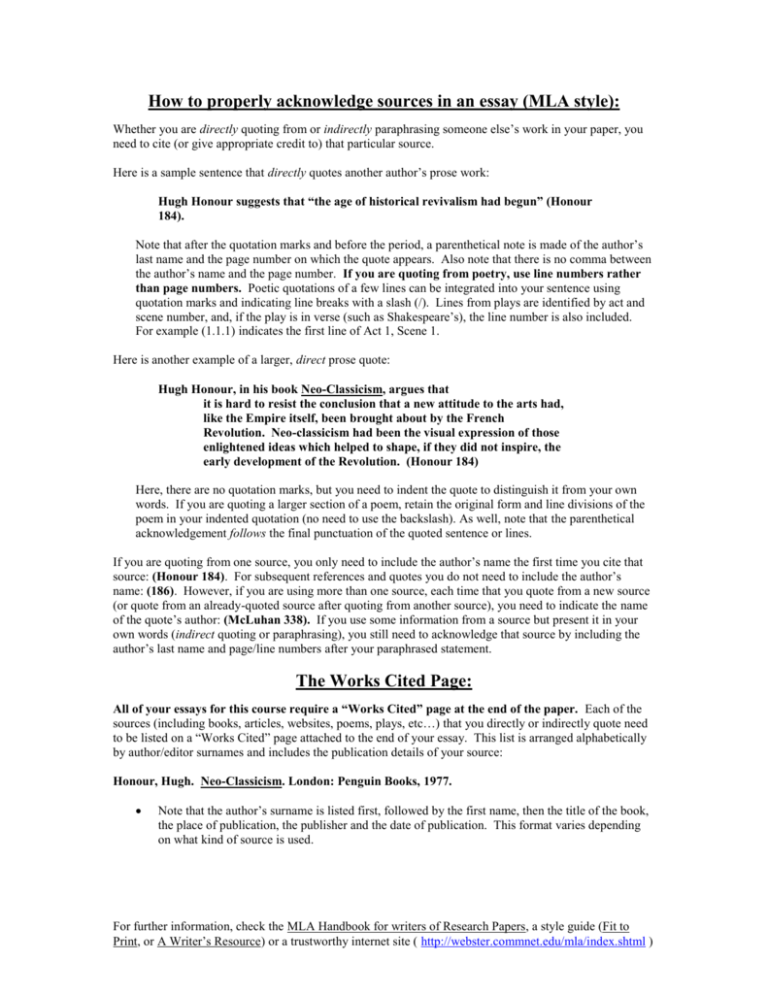
How to properly acknowledge sources in an essay (MLA style): Whether you are directly quoting from or indirectly paraphrasing someone else’s work in your paper, you need to cite (or give appropriate credit to) that particular source. Here is a sample sentence that directly quotes another author’s prose work: Hugh Honour suggests that “the age of historical revivalism had begun” (Honour 184). Note that after the quotation marks and before the period, a parenthetical note is made of the author’s last name and the page number on which the quote appears. Also note that there is no comma between the author’s name and the page number. If you are quoting from poetry, use line numbers rather than page numbers. Poetic quotations of a few lines can be integrated into your sentence using quotation marks and indicating line breaks with a slash (/). Lines from plays are identified by act and scene number, and, if the play is in verse (such as Shakespeare’s), the line number is also included. For example (1.1.1) indicates the first line of Act 1, Scene 1. Here is another example of a larger, direct prose quote: Hugh Honour, in his book Neo-Classicism, argues that it is hard to resist the conclusion that a new attitude to the arts had, like the Empire itself, been brought about by the French Revolution. Neo-classicism had been the visual expression of those enlightened ideas which helped to shape, if they did not inspire, the early development of the Revolution. (Honour 184) Here, there are no quotation marks, but you need to indent the quote to distinguish it from your own words. If you are quoting a larger section of a poem, retain the original form and line divisions of the poem in your indented quotation (no need to use the backslash). As well, note that the parenthetical acknowledgement follows the final punctuation of the quoted sentence or lines. If you are quoting from one source, you only need to include the author’s name the first time you cite that source: (Honour 184). For subsequent references and quotes you do not need to include the author’s name: (186). However, if you are using more than one source, each time that you quote from a new source (or quote from an already-quoted source after quoting from another source), you need to indicate the name of the quote’s author: (McLuhan 338). If you use some information from a source but present it in your own words (indirect quoting or paraphrasing), you still need to acknowledge that source by including the author’s last name and page/line numbers after your paraphrased statement. The Works Cited Page: All of your essays for this course require a “Works Cited” page at the end of the paper. Each of the sources (including books, articles, websites, poems, plays, etc…) that you directly or indirectly quote need to be listed on a “Works Cited” page attached to the end of your essay. This list is arranged alphabetically by author/editor surnames and includes the publication details of your source: Honour, Hugh. Neo-Classicism. London: Penguin Books, 1977. Note that the author’s surname is listed first, followed by the first name, then the title of the book, the place of publication, the publisher and the date of publication. This format varies depending on what kind of source is used. For further information, check the MLA Handbook for writers of Research Papers, a style guide (Fit to Print, or A Writer’s Resource) or a trustworthy internet site ( http://webster.commnet.edu/mla/index.shtml )
